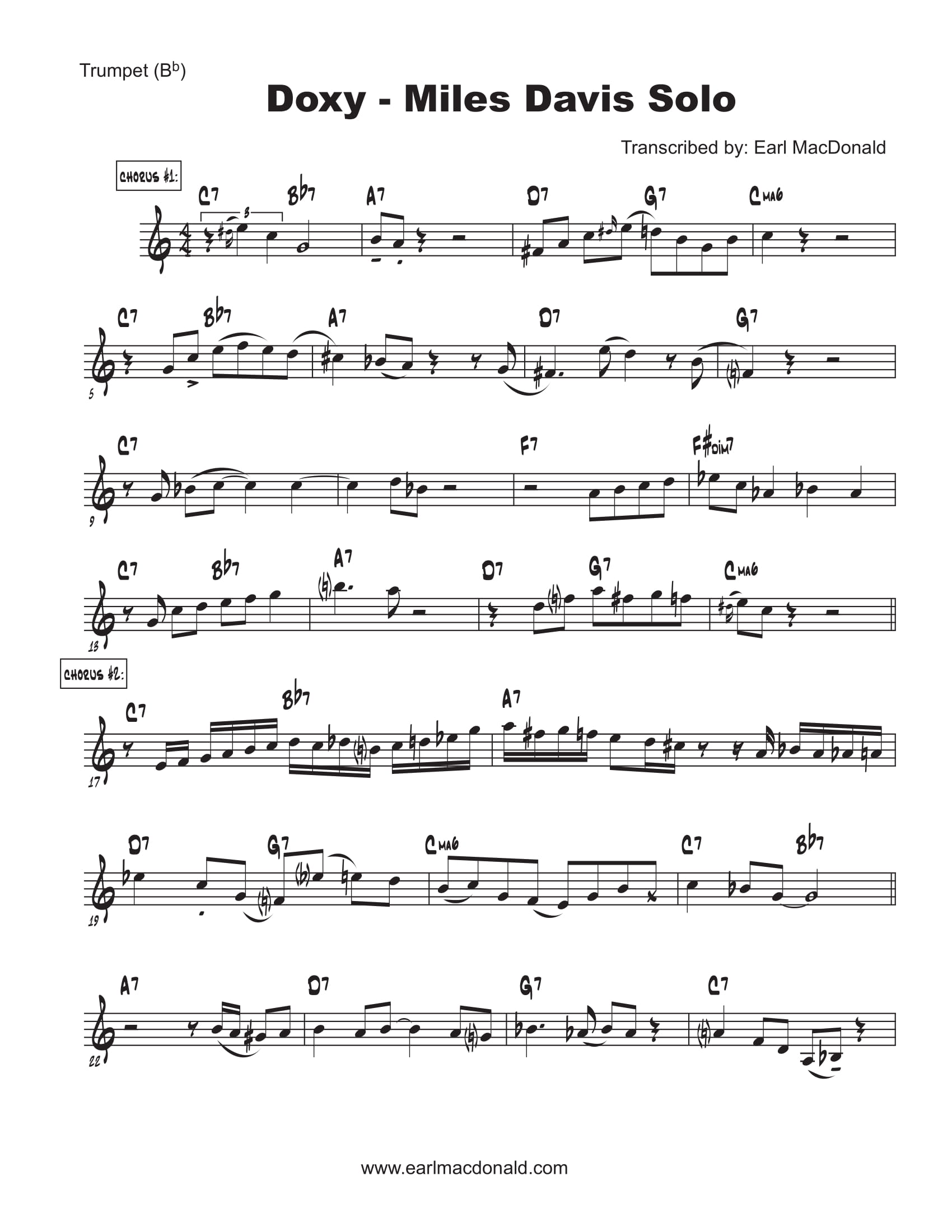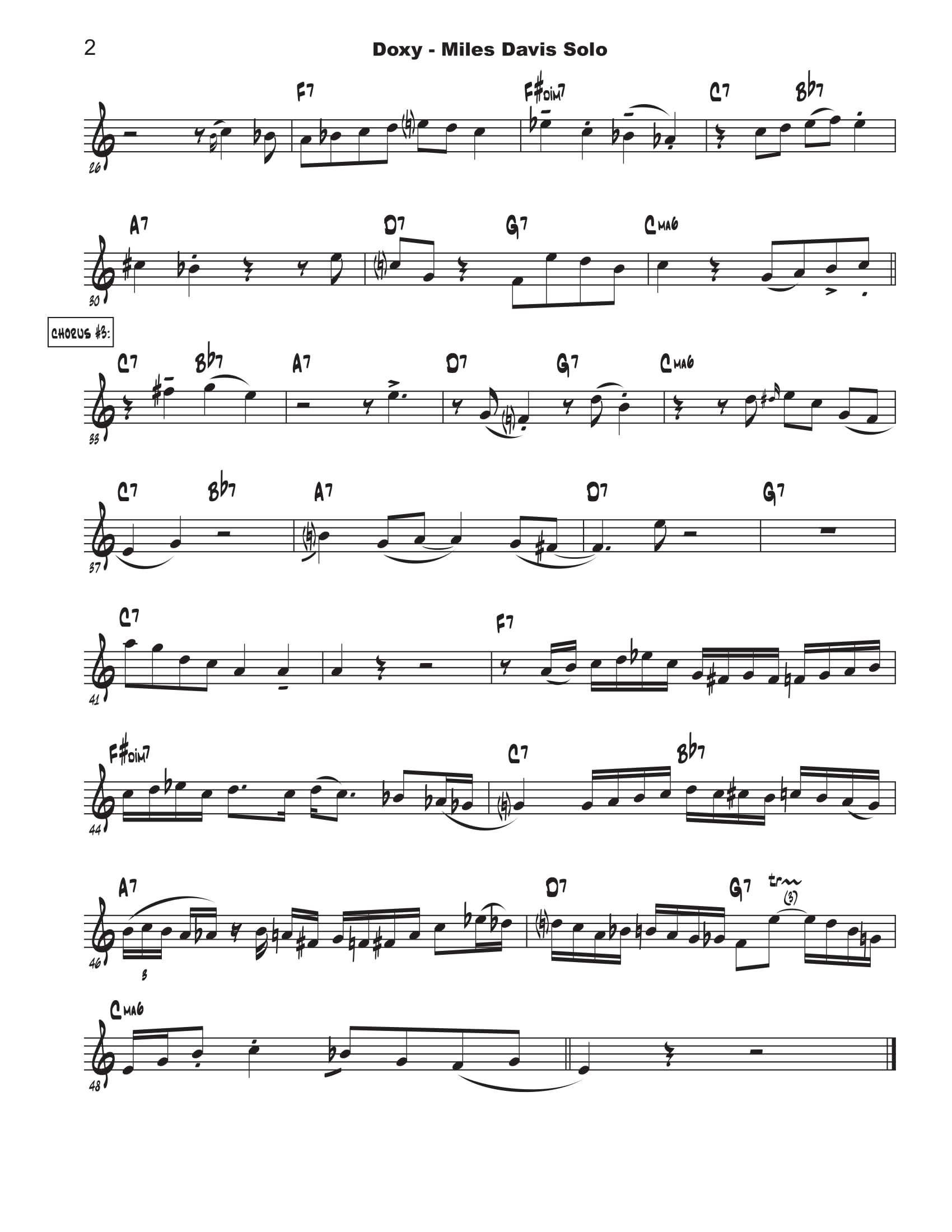Miles Davis’ solo on “Doxy” is a brilliant example of simplicity and clarity in jazz. Recorded in 1954 on the “Bags’ Groove” album, its melodies are easy to sing and its phrase structure is deliberate and varied. The harmonic progression is clearly outlined, using chord tones to guide the listener. The solo has an honest, unpretentious quality. To a degree, this might stem from Miles’ nuanced ornamentation and note bending, which imitates vocal inflections.
For all these reasons and more, I chose this solo to transcribe for my son to learn on trumpet. This is the first jazz solo I have had Logan learn. He’s also playing this tune in his jazz combo. I am hoping this solo will be a stepping stone towards him “going deeper” than just playing the blues scale in his improvisations on this piece (even though that approach works just fine). Here’s my transcription:
Miles Davis solo transcription: “Doxy”


The original recording is conveniently posted on YouTube, should you wish to follow along. In addition to Miles Davis on trumpet, this classic track includes Sonny Rollins – tenor sax, Horace Silver – piano, Percy Heath – bass and Kenny Clarke – drum set.
Throughout the song’s form, Miles never outlines the Bb7 chord (on beat 3) in measures 1, 5 and 13. Either the chord symbol didn’t appear on the chart he was issued, or he intuitively knew it functioned as a passing chord and disregarded it. I love the linear clarity he achieves by beginning the solo with a descending C triad. His second phrase is equally clear, perfectly outlining the D7 and G7 going to C.
Logan and I learned the solo in small sections, and gradually pieced it together. We often played along with Miles, sometimes at a reduced speed. [YouTube’s built-in feature for playing music at a slower rate is a terrifically useful tool for musicians!] One evening, we sat down together, listened carefully, and added slur patterns and articulations to the transcription. Learning the fast passages took considerable patience. We isolated them and started slow, using a metronome. Then, we gradually increased our speed, one notch at a time. The solo’s range isn’t extreme (going to a B above the staff); but, having braces on his teeth makes the higher notes somewhat challenging. We therefore had to be strategic in our practicing, as we couldn’t play these higher passages over too many times, repeatedly, without him experiencing (braces-related) pain.
After having played it a lot with the original recording, we tried playing it accompanied by our Aebersold play-a-long recording, and later with me at the piano. Here’s a video of us playing it together, with me accompanying.
Doxy transcription performance:
Tackling some Blue Mitchell is next on our docket, to start building jazz trumpet vocabulary.
